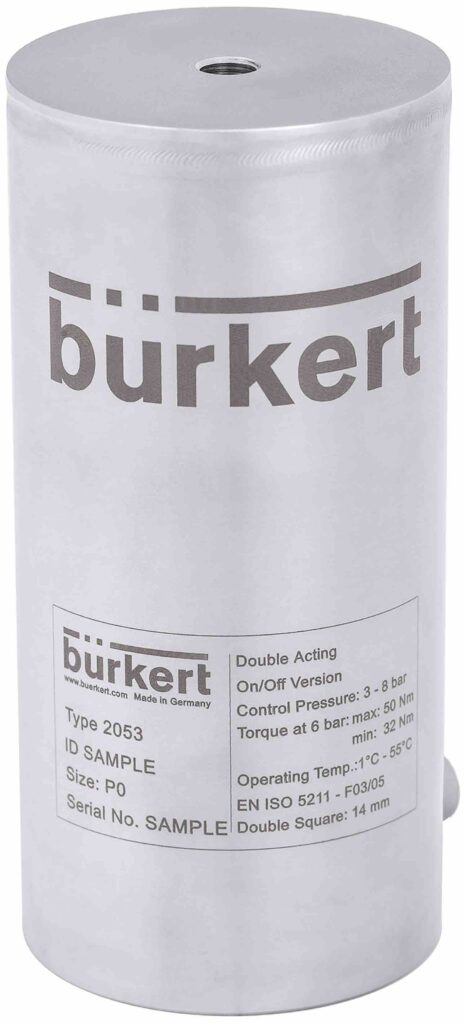Bürkert has released a stainless steel hygienic rotary actuator for automated control of hygienic applications with ball and butterfly valves.
The Type 2053 actuator features ISO 5211 mounting, meaning it can be retrofitted to virtually all brands of rotary valve and can be specified with an integrated rotary valve positioner.
The Type 2053 launch opens the hygienic actuator market for Bürkert, which will supply OEMs and end users primarily for food & beverage applications, including dairies, breweries and distilleries.
Manufactured from Type 304 stainless steel, the actuator will also be presented to the pharmaceutical and water treatment sectors as well as applications demanding hygiene and frequent washdown.
Available in sizes P0, P1 and P2, the actuator is compatible with any variety of ball or butterfly rotary valve.
The actuator can be specified with a Bürkert Element control head from the on/off Type 8691 to the modulating process control of the Type 8693, enabling the Type 2053 actuator to be used as any part of a decentralised automation solution.
Control capability is also provided within a compact package, enabling OEMs to reduce space requirements.
Communication takes place over Bürkert Systembus (büS), based on the CANopen protocol, with support for PROFINET, PROFIbus, Ethernet and Modbus/TCP.

The Element control head interface is common to Bürkert’s linear valves, reducing cost and time in stocking and procurement for existing Bürkert valve users upgrading to the new Type 2053 actuator.
As the Type 2053 actuator uses the ISO 5211-compliant standard interface for valve mounting, it can also be retrofitted to virtually any brand of valve.
Should the valve have a proprietary mounting system, a third-party conversion kit can be used to enable integration.
While Bürkert can supply the complete valve system, retrofitting the Type 2503 actuator to existing valves can enable easy installation to achieve digital automation control and communication.
In addition to the welded stainless steel housing, which is free of corners or edges, hygiene is further assured through the internal pilot air duct.
As the Element mounting system removes the need for external tubing between the actuator and control head, hygiene is maximised through the crevice-free, washable design.
The internal pilot air duct removes the potential of damage to pipework and durability is also enhanced by the air refresh system within the fully sealed actuator, which requires no maintenance.
The system recycles a proportion of the clean, dry air used to pressurise the actuator, re-routing it to its piston and spring system.
With alternative systems, ambient air is sucked into the chamber when the spring is compressed. In environments such as dairies and breweries with moist ambient air, this corrodes the spring over time.
Alternatively, Bürkert expects a three-fold increase in the lifetime of the spring where the same technology deployed on its Element valves increased cycle lifetime from two to seven million.
The Type 2053 actuator has also been designed to reduce energy costs. The small diameter actuator means a lower requirement for compressed air, which accumulated across a large plant consisting of a thousand-plus valves, can represent a significant saving.
 Engineer News Network The ultimate online news and information resource for today’s engineer
Engineer News Network The ultimate online news and information resource for today’s engineer





